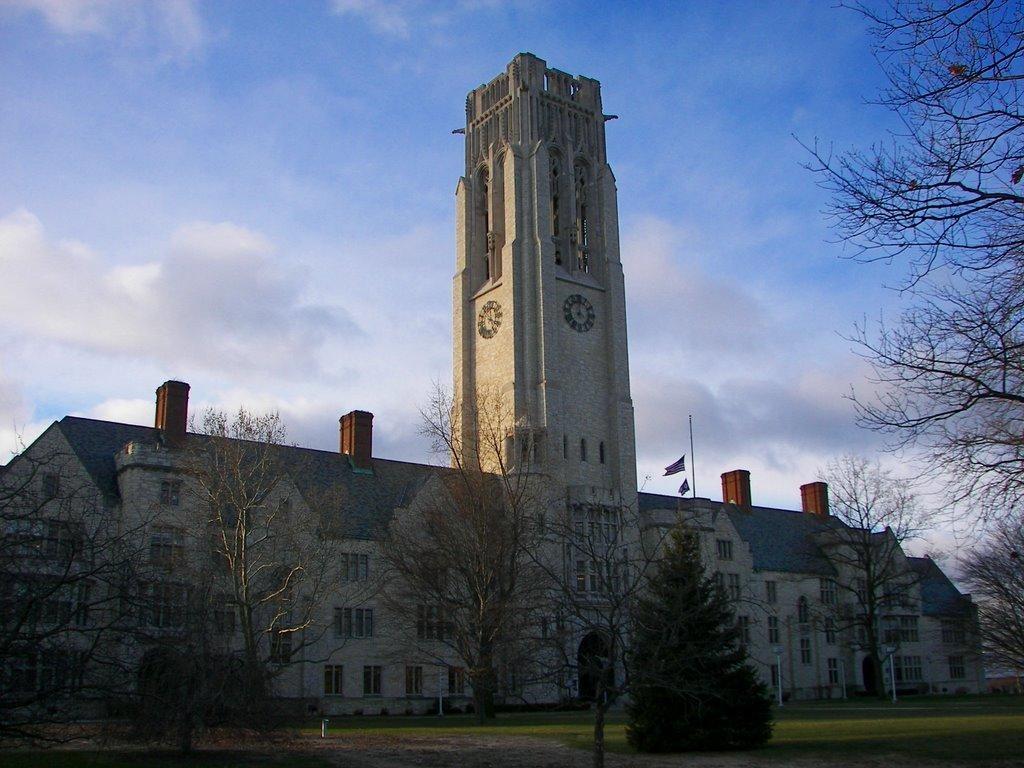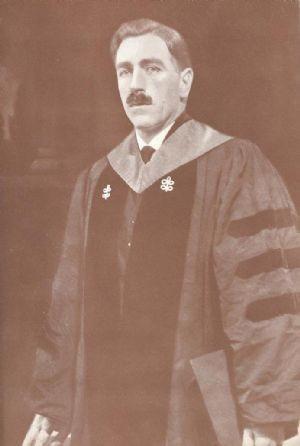by Mickiel Nathaniel Graves and Sean Sabo, Spring 2018 (Class Project for Public History Practicum, HIS 4980)
- Introduction
University Hall has been an iconic part of the University of Toledo and the City of Toledo since its conception in 1929. The building utilizes collegiate gothic architecture and stands as an inspiration to students to learn and reach for their goals. However, University Hall was not always apart of the University of Toledo.
Prior to the completion of University Hall in 1931, and the leadership of President Henry Doermann, the University was financially unstable, having changed its location multiple times. However, this all changed in 1928 when the University appointed Dr. Doermann President of the University. A bond levy which was placed on the ballot for the City of Toledo in the fall of 1928, which would give funds to the University for the purchase of a new land and the construction of a new campus. President Doermann, university alumni, and other volunteers were able to gather enough support for the bond levy to be passed. The bond issue that was agreed upon totaled $2,800,000, which in today’s (2018) currency would be close to $40 million.[1] After many locations throughout the Toledo area were proposed, it was finally agreed upon by City Council and the relocation board that the new location of the University would be on West Bancroft Street, where it is presently located. On January 31, 1929 the board approved the site and purchased, for a price of $275,00, land from the Rufus Wright Farm (80-acres on West Bancroft).[2] Additionally, another purchase was made to buy 34 acres of land in between the Wright Farm and Terminal Railroad tracks, for a price of $25,000.[3] In 1929, the architectural firm of Mills, Rhines, Bellman, and Nordhoff was chosen to design the University buildings. The contract for constructing University Hall, as well as the Field House went to the Henry J. Spieker Company. Construction finally started and took 11 months to be completed in 1931. With the completion of University Hall UT now has a stable educational environment.
-
President Doermann
He had chosen University Hall’s Gothic architectural design to reflect a few aspects from the Universities in Europe believing it would be an encouragement to the students attending. Due to this choice in design, it became a standard for all other buildings created on the main campus. Doermann brought more life to the school starting in 1928. At the age of 37, he was elected President of the University in the city of Toledo. After becoming President of the University his first task was to begin an expansion program to organize a new location for the University. Doermann collected the funding needed for this project given to him by a city-initiated bond levy having ten thousand votes. At the time of the new University President had to deal with a little flooding from the Ottawa River, but soon ground was broken for the University Hall in March of 1929 and the cornerstone ceremony began on June 12, 1930. Construction was completed with 400 construction workers in the span of 10 months and a five day open house was initiated in February of 1931.
-
Building Statistics and Facts:
Architectural Style: Collegiate Gothic
- Standing 63 feet tall, includes a bell tower in the center which stands 205 feet tall.
- The tower has four gargoyles which face outward on the four corners.
- The front entrance is modeled after Daneway Hall, a 16th century mansion.
- Contains to courtyards in the east and west wings.
- Features classical gothic architecture motifs, such as a turret in the front, pointed arch doorways, battlements, and vaulted ceilings.
Architects: Mills, Rhines, Bellman, and Nordhoff Inc.
Contractor: Henry J. Spieker Company (crew of 400 workers)
Ground Breaking: March 3rd, 1929
Date Completed: 1931
Cost: $2 million (1929)
Interior of University Hall:
- Has 337 room, including a theatre which hold over 500 people (named after President Doermann), a cafeteria (removed now office space), 2,000 windows, 12 chimneys, and a library located on the 5th floor (has been removed and is now class rooms and offices).
- Home to various administrative and academic offices which consist of the Presidential office, college of arts and letters, office of the provost, college of graduate studies, and college of mathematics. Students who take their subjects in this building are given plenty of ranging activities such as foreign languages, religion, economics, and psychology.
Materials Used: 50,00 tons of Wisconsin Lannon stone and Indiana Limestone. Including 993 tons of Fave bricks, 1,048,600 Duplex bricks, 1,957,300 common bricks, and 6,000 tons of mortar.
-
Fun Facts:
Ivy in the front of the building comes from Heidelberg College of Germany. In the past it used to be tradition, in the United States, once a new campus was built a branch of ivy was brought over from a European Institution and planted in the new campus. Symbolizing continuing education.
Corner stone was laid on June 12th, 1930, however Dr. Doermann left a sort of time capsule within the stone before it was laid. The stone contains a short history of the University, descriptions of the bond campaign, copies of the University’s annual Blockhouse, Campus Collegian, Toledo City Journal, and pictures from the ground breaking.
On the third floor there is a collection of 55 painted University seals, which represent the first faculty to occupy University Hall.
Bibliography
Value of $2,800,000 in 1928. Inflation Calculator for Today's Dollars, www.saving.org/inflation/inflation.php?amount=2,800,000&year=1928.
Hickerson, Frank R. The Tower Builders; the Centennial Story of the University of Toledo. University of Toledo Press, 1972.
Notes
[1] www.saving.org
[2] The Tower Builders
[3] The Tower Builders


